




Do you have a question about the Cisco ATA 191 and is the answer not in the manual?
Overview of the analog telephone adapter (ATA) and its interfaces for connecting analog devices.
Details the types of devices, such as analog phones and fax machines, that can be connected to the ATA.
Describes the physical connectors and components of the ATA 191 and ATA 192 models.
Details the LEDs and buttons located on the top panel of the ATA devices.
Explains the functionality of the Problem Report Tool (PRT) button for diagnostics and troubleshooting.
Identifies and describes the ports and buttons found on the back panel of the ATA 191 and ATA 192.
Step-by-step guide for connecting the ATA to your network and power source.
Introduction to the web-based utility for configuring ATA features and settings.
Lists the various call features supported by the ATA, such as call forwarding and speed dial.
Details updates and new topics introduced in firmware release 11.2(4).
Details updates and new topics introduced in firmware release 11.2(1).
Details how to use the web-based utility to configure ATA features and settings.
Step-by-step instructions for setting up basic phone features via the configuration utility.
Explains how to configure call forwarding settings for incoming calls.
Details how to set up call forwarding for specific caller numbers.
Guide on configuring speed dial entries for faster calling.
Configuration options for supplementary services like Call Waiting and Caller ID.
How to assign specific ringtones to different callers or lines.
Configuration of ringtones for various call states like incoming calls or held calls.
Overview of logging capabilities for tracking network events and traffic.
Instructions for enabling and configuring logging modules for debugging.
Configuration options for debug log settings, including log size.
How to view and download system logs for analysis.
Configuration for collecting and sending event logs via SYSLOG.
Details on generating and downloading Problem Report Tools (PRT) files.
Procedures for submitting problem reports using the configuration utility.
How to capture and view PCM log files for call analysis.
Configuration and download of CSS dump files for debugging.
Settings for creating and managing crash dump files upon errors.
Step-by-step guide to making a standard phone call using the analog phone.
Instructions on how to redial the last dialed number.
How to answer an incoming call on the connected analog phone.
Procedure for handling call waiting and switching between calls.
Steps to place an active call on hold and resume it later.
Guide on setting up call forwarding to a different phone number.
How to transfer an active call to another party.
Instructions for setting up a multi-party conference call.
Explanation of how star codes can be used to access call features.
Procedure for making emergency calls and ensuring location services are active.
How to check for new voice messages indicated by a stutter tone.
Steps to access and listen to voice messages via the voicemail system.
General advice on product safety, performance, and environmental considerations.
Information on how power outages affect emergency calling and device functionality.
Recommendations for using external devices like headsets and cables with the ATA.
How network congestion might affect phone behavior and performance.
Statements related to FCC compliance and other regulatory requirements.
Specific compliance statements required by the Federal Communications Commission.
FCC statement regarding user modifications and authority to operate the equipment.
Specific compliance information relevant to users in Brazil.
Overview of product security features and compliance with import/export laws.
Links and information about End User License Agreement and compliance documents.
Overview of the analog telephone adapter (ATA) and its interfaces for connecting analog devices.
Details the types of devices, such as analog phones and fax machines, that can be connected to the ATA.
Describes the physical connectors and components of the ATA 191 and ATA 192 models.
Details the LEDs and buttons located on the top panel of the ATA devices.
Explains the functionality of the Problem Report Tool (PRT) button for diagnostics and troubleshooting.
Identifies and describes the ports and buttons found on the back panel of the ATA 191 and ATA 192.
Step-by-step guide for connecting the ATA to your network and power source.
Introduction to the web-based utility for configuring ATA features and settings.
Lists the various call features supported by the ATA, such as call forwarding and speed dial.
Details updates and new topics introduced in firmware release 11.2(4).
Details updates and new topics introduced in firmware release 11.2(1).
Details how to use the web-based utility to configure ATA features and settings.
Step-by-step instructions for setting up basic phone features via the configuration utility.
Explains how to configure call forwarding settings for incoming calls.
Details how to set up call forwarding for specific caller numbers.
Guide on configuring speed dial entries for faster calling.
Configuration options for supplementary services like Call Waiting and Caller ID.
How to assign specific ringtones to different callers or lines.
Configuration of ringtones for various call states like incoming calls or held calls.
Overview of logging capabilities for tracking network events and traffic.
Instructions for enabling and configuring logging modules for debugging.
Configuration options for debug log settings, including log size.
How to view and download system logs for analysis.
Configuration for collecting and sending event logs via SYSLOG.
Details on generating and downloading Problem Report Tools (PRT) files.
Procedures for submitting problem reports using the configuration utility.
How to capture and view PCM log files for call analysis.
Configuration and download of CSS dump files for debugging.
Settings for creating and managing crash dump files upon errors.
Step-by-step guide to making a standard phone call using the analog phone.
Instructions on how to redial the last dialed number.
How to answer an incoming call on the connected analog phone.
Procedure for handling call waiting and switching between calls.
Steps to place an active call on hold and resume it later.
Guide on setting up call forwarding to a different phone number.
How to transfer an active call to another party.
Instructions for setting up a multi-party conference call.
Explanation of how star codes can be used to access call features.
Procedure for making emergency calls and ensuring location services are active.
How to check for new voice messages indicated by a stutter tone.
Steps to access and listen to voice messages via the voicemail system.
General advice on product safety, performance, and environmental considerations.
Information on how power outages affect emergency calling and device functionality.
Recommendations for using external devices like headsets and cables with the ATA.
How network congestion might affect phone behavior and performance.
Statements related to FCC compliance and other regulatory requirements.
Specific compliance statements required by the Federal Communications Commission.
FCC statement regarding user modifications and authority to operate the equipment.
Specific compliance information relevant to users in Brazil.
Overview of product security features and compliance with import/export laws.
Links and information about End User License Agreement and compliance documents.
| Fax Support | T.38 Fax Relay |
|---|---|
| Relative Humidity | 10% to 90% (non-condensing) |
| Ports | 2 FXS ports |
| Voice Protocol | SIP |
| Protocols | SIP, RTP, RTCP |
| Power | 5V DC |
| Network Interfaces | 10/100BASE-T Ethernet port |
| Operating Temperature | 32°F to 104°F (0°C to 40°C) |
| Audio Codecs | G.711 (a-law and μ-law), G.729a, G.722, G.726 |
| Voice Codecs | G.711 (a-law and μ-law), G.729a, G.722, G.726 |
| Storage Temperature | 14 to 140°F (-10 to 60°C) |

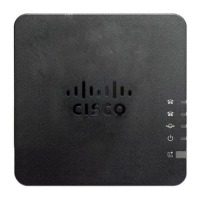

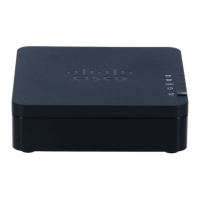
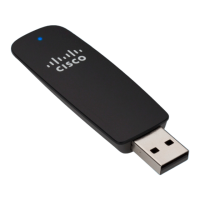

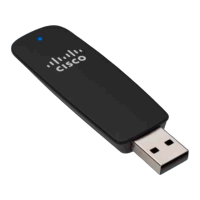
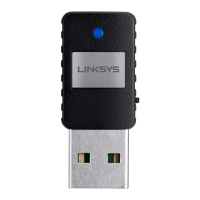
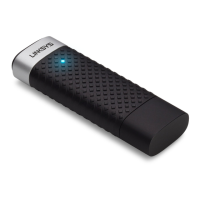



